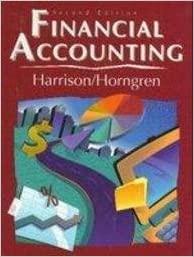Use Excel:





Questions 6 through 29 below are interlinked: Miles Kaufman is planning on investing in an office building that is for sale for $25 million and would require an additional capital expenditure of $2.5 million at the end of the 5th year just prior to the sale of the property by Miles. Structural reserves are set aside every year to fund the year 5 CapEx. The CapEx will be funded entirely with cash flows generated by the property, 19% of the total purchase price is allocable to land. After setting aside capital reserves of $0.5 million in each year, the property generates $1.6 million of NOI in the first year; NOI in Year 2 is $2.7 million; NOI in Year 3 is $2.8 million; NOI in Year 4 is $3.2 million; NOI in Year 5 is $4 million. Thereafter, NOI grows 5% annually. Miles estimates that if he spends the capex reserve of 2.5 million to improve the property immediately before its sale, he could sell the property at end of the 5th year for $40.0 million. If Miles's weighted average cost of equity capital is 19% and the purchase is funded entirely with equity, what is the present value (PV) of the NOI and the sale price (all together) of this Q6. property from years 1 to 5? Emily Woldeselassie is wondering, what would be the total expected nominal value of the depreciation tax shield at the beginning of year 6 for Yiyun Zheng, if she buys the property from Miles (in question 6 above) for $51 million at the end of the 5th year and allocates 22% of his purchase price towards land value. Yiyun plans to own the property for ten years and her tax rate is 35% (a)$2,380,761 (b)$2,661,538 (c)$3,570,000 (d)$3,707,308 Q13. Based on question 13 above, Yiyun believes that there is a high level of uncertainty whether she will be able to actually receive the tax shield during her holding period. She believes that she would expect an additional return of 4% to compensate her for this risk over and above her cost of capital of 18%. What is the present value of the depreciation tax shield at the time of her purchase? Q14. (a)$885,768 (b)$1,862,153 (c)$1,400,577 (d)$1,604,389 In question 6 above, let us assume that the budgeted $2.5 million for capital expenditure is actually spent equally (i.e. $500,000 in each of the five years rather than all of the $2.5 million being spent just prior to the sale of the property at the end of the 5th year). Ziteng Zhang wants to know what is the total accumulated depreciation during Edward's 5-year holding period? Q15. (a)$2,711,538 (b) $2,660,256 (c) $2,788,462 (d $2,940,340 In question 15 above, if Miles's tax rate is 42% and the cost of capital is 19%, Chenyu Wei wants to know what is the present value of all of the depreciation tax shield during his 5-yea- holding period? 16. (a) $500,381 (b)$520,512 (c) $661,263 (d) $710,538 Questions 6 through 29 below are interlinked: Miles Kaufman is planning on investing in an office building that is for sale for $25 million and would require an additional capital expenditure of $2.5 million at the end of the 5th year just prior to the sale of the property by Miles. Structural reserves are set aside every year to fund the year 5 CapEx. The CapEx will be funded entirely with cash flows generated by the property, 19% of the total purchase price is allocable to land. After setting aside capital reserves of $0.5 million in each year, the property generates $1.6 million of NOI in the first year; NOI in Year 2 is $2.7 million; NOI in Year 3 is $2.8 million; NOI in Year 4 is $3.2 million; NOI in Year 5 is $4 million. Thereafter, NOI grows 5% annually. Miles estimates that if he spends the capex reserve of 2.5 million to improve the property immediately before its sale, he could sell the property at end of the 5th year for $40.0 million. If Miles's weighted average cost of equity capital is 19% and the purchase is funded entirely with equity, what is the present value (PV) of the NOI and the sale price (all together) of this Q6. property from years 1 to 5? Emily Woldeselassie is wondering, what would be the total expected nominal value of the depreciation tax shield at the beginning of year 6 for Yiyun Zheng, if she buys the property from Miles (in question 6 above) for $51 million at the end of the 5th year and allocates 22% of his purchase price towards land value. Yiyun plans to own the property for ten years and her tax rate is 35% (a)$2,380,761 (b)$2,661,538 (c)$3,570,000 (d)$3,707,308 Q13. Based on question 13 above, Yiyun believes that there is a high level of uncertainty whether she will be able to actually receive the tax shield during her holding period. She believes that she would expect an additional return of 4% to compensate her for this risk over and above her cost of capital of 18%. What is the present value of the depreciation tax shield at the time of her purchase? Q14. (a)$885,768 (b)$1,862,153 (c)$1,400,577 (d)$1,604,389 In question 6 above, let us assume that the budgeted $2.5 million for capital expenditure is actually spent equally (i.e. $500,000 in each of the five years rather than all of the $2.5 million being spent just prior to the sale of the property at the end of the 5th year). Ziteng Zhang wants to know what is the total accumulated depreciation during Edward's 5-year holding period? Q15. (a)$2,711,538 (b) $2,660,256 (c) $2,788,462 (d $2,940,340 In question 15 above, if Miles's tax rate is 42% and the cost of capital is 19%, Chenyu Wei wants to know what is the present value of all of the depreciation tax shield during his 5-yea- holding period? 16. (a) $500,381 (b)$520,512 (c) $661,263 (d) $710,538











